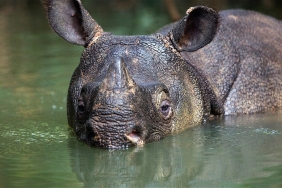SUMATRAN ORANGUTAN, THE FOREST STEWARDSHIP ANIMAL
The international use of the name orangutan in the Indonesian language is a source of pride for the Indonesian people. This wildlife in Indonesia is only found on two major islands in Indonesia, namely the Kaliamantan Orangutan (Pongo pygmaeus) in Kalimantan, the Sumatran Orangutan (Pongo abelii) and the Tapanuli Orangutan (Pongo tapanuliensis) in North Sumatra.
The province of Aceh is the main habitat of the Sumatran Orangutan, where orangutans live in the Leuser forest area and a small part is in the forest block in North Sumatra. While the Tapanuli Orangutan is specifically located in the IUCN (The International Union for Conservation of Nature) critical Batases forest area. Threats to orangutan conservation continue to occur mainly due to habitat fragmentation, forest loss especially in the lowlands due to conversion of forest areas, and orangutan hunting. Economic development and forest clearing have driven the Sumatran orangutan population to the brink of extinction in its natural habitat in the forests of Aceh. This is exacerbated by the rampant poaching and illegal trade of wildlife, coupled with weak enforcement of wildlife laws in Indonesia, which also threaten the conservation of the Sumatran Orangutan.
The total number of orangutans is estimated to be around 13,710 individuals in a habitat of 2,053,276 ha. The largest Sumatran orangutan population is in the Leuser landscape, while the number of Tapanuli orangutans is around 760 individuals and it is estimated that only two Sumatran orangutan reintroduction metapopulations are predicted to be sustainable for the next 100-500 years, if the reintroduction of orangutans in these metapopulations continues for the next ten years (Utami-Atmoko et al. 2017).
Forest Management Animals
The presence of Sumatran orangutans in the forest has shown the main tasks and functions of orangutans in the forest area, Sumatran orangutans have naturally lived and interacted with the forest environment itself. The ability of forest management can be described as follows, first the selection of nest trees, orangutans are able to choose certain trees to make their nests, the nest trees chosen are of course with certain abilities, the nest tree must be strong, have flexible and elastic branches that are also able to withstand human tripe this is one of the skills of orangutans in choosing trees.
Third, distributing the seeds of forest plants, orangutans are fruit eaters, they consume forest fruits as their main food and almost 60 percent of orangutans eat fruits and the seeds of these fruits come out through feces and spread on the forest floor and indirectly orangutans have helped spread tree seeds in the forest.
There are many more functions of orangutans in forest areas, indirectly orangutans grow trees that have naturally formed forests, forests have been their home for hundreds of years, and are well managed, tree branches have been systematically managed without the touch of human hands,
.
Sumatran orangutans live almost entirely in Aceh's forests and this shows that Aceh's forests are very important for the conservation of wild orangutans in their native habitat. The future sustainability of the Sumatran orangutan population depends on the rate of habitat loss, fragmentation, hunting and how long these threats last before they can be reduced or stopped. It is up to all of us to save Aceh's forests, which are critical habitats for the future survival of the Sumatran orangutan.
,>





